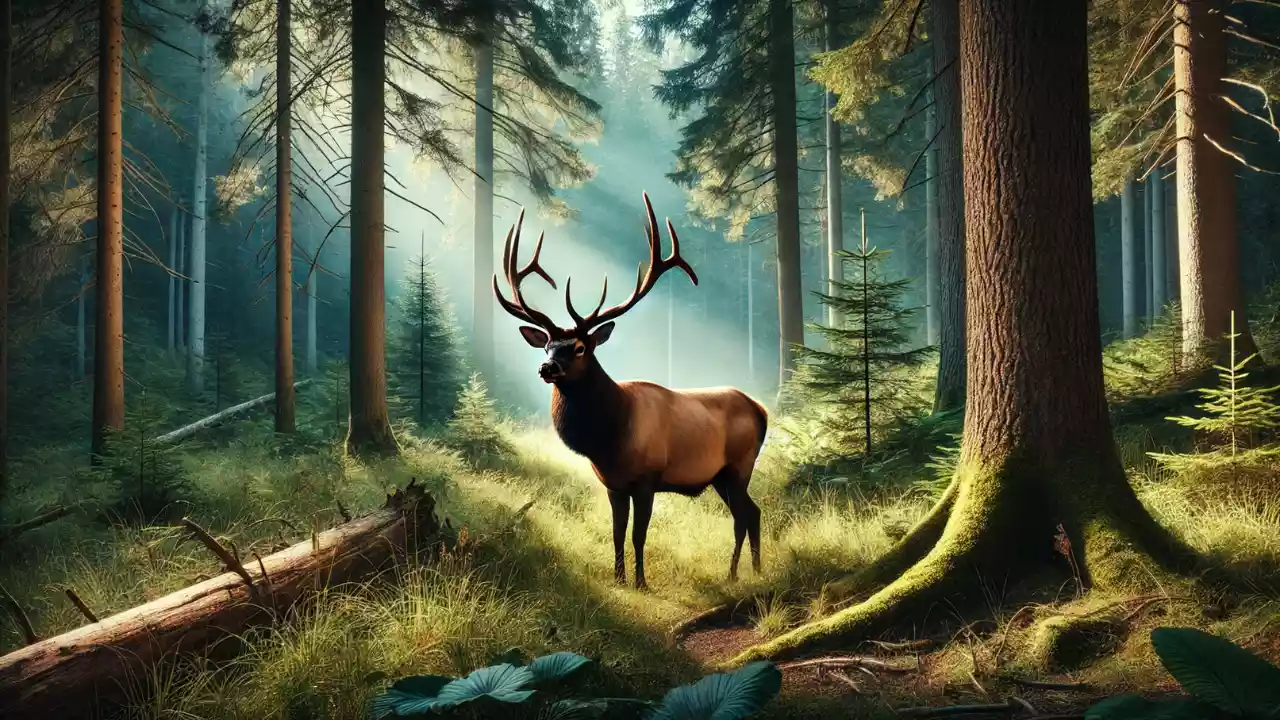Elks are majestic creatures known for their impressive antlers and grand presence in the wild. These large members of the deer family often roam in groups, and just like other animals, they have special names when they gather together. Let’s explore the fascinating collective nouns for elks and learn more about these wonderful animals.
Collective Noun for Elks
| Collective Noun |
|---|
| A Gang |
| A Herd |
| A Mob |
| A Troop |
| A Crowd |
1. A Gang
Explanation: The term “gang” is used to describe a group of elks, highlighting their social nature and the way they stick together, especially when moving through the forest.
Examples:
- A gang of elks was seen wandering through the dense forest, their antlers gleaming in the sunlight.
- The photographer captured a gang of elks drinking from a tranquil stream.
- Early morning hikers often spot a gang of elks grazing in the open meadows.
2. A Herd
Explanation: “Herd” is a common collective noun for many large animals, including elks, emphasizing their tendency to move and live in large groups for safety and companionship.
Examples:
- A herd of elks crossed the road, causing cars to stop and admire their beauty.
- In the national park, a herd of elks roamed freely, attracting many wildlife enthusiasts.
- A herd of elks can be seen migrating together during seasonal changes.
3. A Mob
Explanation: The term “mob” is used to describe a group of elks, highlighting their large numbers and potentially unruly behavior when they are excited or threatened.
Examples:
- A mob of elks stampeded across the field, startled by a sudden noise.
- Rangers observed a mob of elks gathering near the waterhole at dusk.
- A mob of elks was seen moving together through the forest, their presence felt by all nearby.
4. A Troop
Explanation: “Troop” suggests a more organized and coordinated group of elks, reflecting their social structure and the way they move and interact as a unit.
Examples:
- A troop of elks marched through the snowy landscape, leaving tracks behind them.
- The guide pointed out a troop of elks resting under the shade of tall trees.
- During their migration, a troop of elks followed a well-trodden path through the valley.
5. A Crowd
Explanation: The term “crowd” emphasizes the large number of elks that can gather together, creating an impressive and awe-inspiring sight.
Examples:
- A crowd of elks gathered in the clearing, their antlers forming a striking silhouette against the sky.
- The biologist studied a crowd of elks interacting and communicating with each other.
- A crowd of elks appeared on the hillside, captivating the tourists with their majestic presence.
Conclusion
Collective nouns for elks offer a glimpse into the social and fascinating lives of these magnificent animals. Whether it’s a gang moving through the forest, a herd grazing in the meadow, a mob creating a stir, a troop marching together, or a crowd gathering in a clearing, each term paints a vivid picture of elks in their natural habitat. Understanding these collective nouns not only enriches our vocabulary but also deepens our appreciation for the wonder of wildlife. Next time you see elks in the wild, you’ll know just the right word to describe their impressive gatherings.
